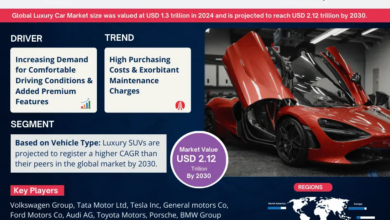Are There Any Limitations On Where Electric CVs Can Operate?
On Where Electric CVs Can Operate

Electric vehicles (EVs) have gained much attention in the small commercial vehicle segment. Also, they’re enhanced in performance for fleet owners while being an eco-friendly alternative. With their zero-emission technology and lower operating costs, models like Atul Elite Plus offer a promising solution to lower pollution and carbon emissions.
However, many users still wonder: are there any limitations on where electric models like Saarthi DLX can operate? Let’s find the answer to this question and explore the scope of electric vehicles in diverse regions.
Urban Environment
In bustling urban environments, electric models like Atul Elite Plus thrive due to their compact size and quiet operation. These CVs easily navigate through congested city streets and bustling traffic. This makes electric vehicles capable of short-distance commutes and urban delivery services.
Many cities, such as Mahindra Treo Zor or Mahindra Zor Grand, encourage the adoption of electric vehicles. For this, they ensure dedicated charging infrastructure and incentives for EV owners. Consequently, electric models have been commonly used in urban areas.
Moreover, electric models like YC electric super yatri offer environmental benefits, including zero tailpipe emissions and reduced noise pollution. It greatly contributes to cleaner and quieter urban environments.
Cities prioritize sustainability to combat air pollution. The popularity of electric vehicles like Saarthi DLX is expected to transform urban auto rickshaw transportation soon.
Suburban and Rural Areas
Electric models are not limited to urban environments; they can also operate effectively in suburban and rural areas. One such model, OSM Rage Plus, delivers a great drive range, reducing dependency on charging infrastructure. It might be less prevalent in these regions compared to cities.
However, advancements in batteries have extended the range of electric vehicles. It promotes trips to longer distances on a single charge. Additionally, electric models offer quieter and smoother rides than traditional vehicles. Making them well-suited for exploring roads and suburban neighborhoods.
Electric truck can provide cost savings for residents in suburban and rural areas. They ensure lower operating costs and less maintenance compared to internal combustion engine vehicles. It helps fleet owners promote their business for progress.
With the growing concern of environmental issues, technology continues to improve. Also, the adoption of electric vehicles like Mahindra E Alfa Cargo is expected to increase steadily.
Commercial and Industrial Applications
Electric models like the Mahindra Grand Zor are being used for commercial and industrial applications. From delivery vans to utility vehicles, these models offer cost-effective and environmentally friendly transportation for businesses.
Moreover, many companies have started using electric vehicles to fulfil sustainability goals while reducing operating costs. For instance, models like the Mahindra Treo Zor can operate without emitting harmful pollutants. The ability of these models to align with sustainability goals makes them ideal for rural or remote settings.
Electric models like Atul Elite Plus contribute to a clean and green drive for employees, reducing exposure to harmful emissions. This improves overall air quality in industrial settings.
With developments in charging infrastructure, the adoption of electric vehicles like Saarthi DLX or Mahindra Treo Zor is expected to accelerate. It will boost the profit margin of businesses or fleet owners in commercial and industrial applications.
Challenges and Considerations
Despite their numerous benefits, electric models do have some limitations that need to be considered. Range and charging infrastructure are common concerns for continuous business operations.
One of the primary concerns is range. Drivers need more charging infrastructure, leading to interruptions in trips. But with Bajaj Maxima XL Cargo and Mahindra Treo Plus, drivers rely very little on charging infrastructure in prolonged trips.
The frequency of charging varies as per the charger type, whether it’s Micro USB or C-type. It influences the duration of charging for models like Saarthi DLX, reducing their charging speed. Further, it increases the upfront costs, while frequent charging tends to degrade electric truck models more quickly.
Infrastructure and Accessibility
The issue of charging infrastructure and its accessibility affects profit margins and operations. While many cities have invested in public charging stations, access to charging facilities in more remote regions may be limited.
Besides, accessibility to charging infrastructure is essential for the widespread adoption of electric vehicles like Atul Elite Plus. Investments in expanding charging networks and implementing fast-charging technology are crucial steps towards addressing this issue.
Besides, incentives and subsidies encourage more individuals to switch to electric models like the Mahindra Treo Zor. Also, it drives users towards a more sustainable transportation future. Furthermore, it brings a change in the manner of cargo transportation, especially in rural areas, becoming better than in urban.
Conclusion
In conclusion, electric models offer a promising solution to reducing emissions and promoting sustainability in transportation. While they are well-suited for urban environments, electric vehicles can also operate effectively in suburban, rural, and industrial settings. However, it is essential to consider the accessibility of charging infrastructure. Nevertheless, with continued advancements in technology and infrastructure, electric models have helped in shaping transportation.
